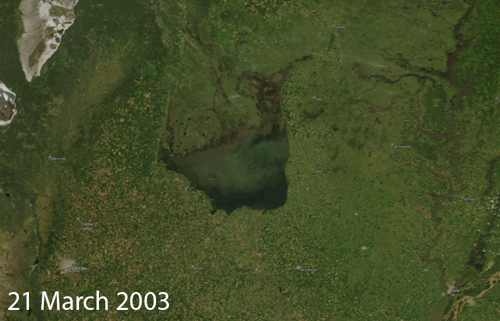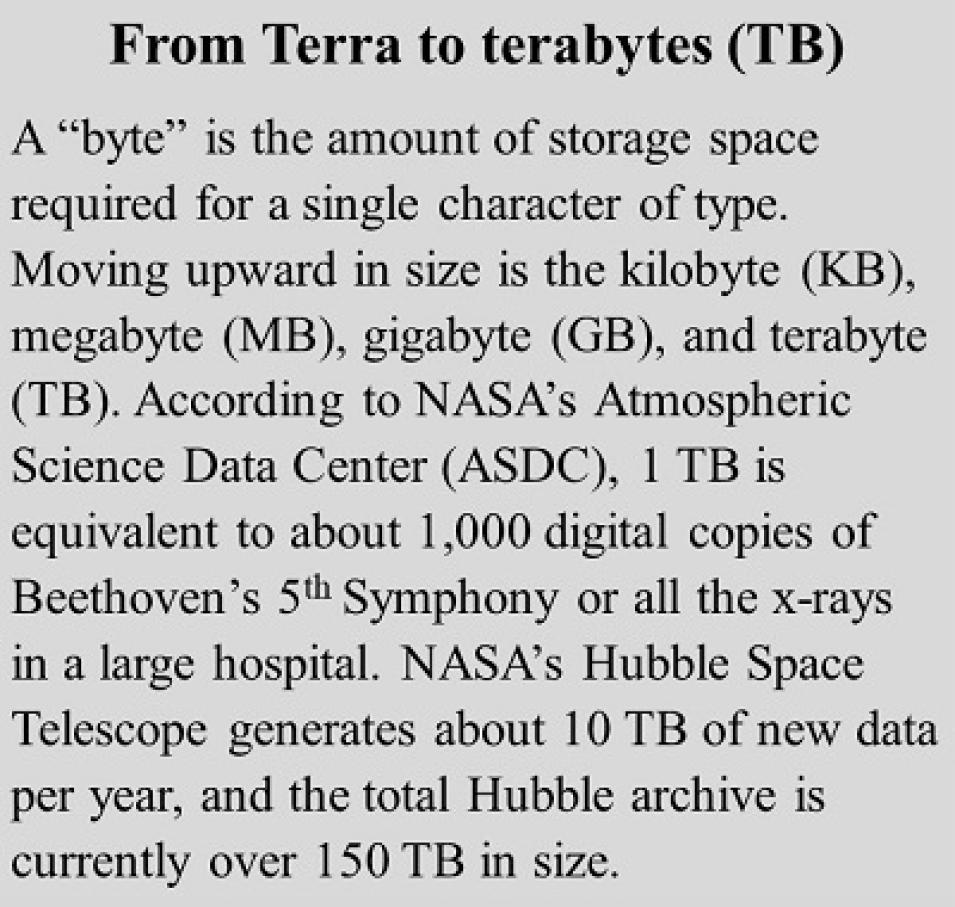For the MODAPS team, filling in the MODIS imagery archive gap was a challenge, especially given the volume of data involved and the processing resources available. According to Kurt Hoffman, the MODIS Lead Operations Analyst at MODAPS, the volume of MODIS data from Terra and Aqua required to produce GIBS imagery for land alone was more than 3,850 terabytes (TB) (the data volume required for processing MODIS atmosphere imagery was much smaller: about 424 TB). After processing, MODAPS sent more than 565 TB of land imagery and about 14.41 TB of atmosphere imagery to GIBS.
“At first, we thought it would be about spring 2018 when we would get caught up in processing all the MODIS imagery,” Hoffman says. “We got lucky during this processing when an extra machine was freed up. We were able to use this extra machine and double down on the processing. In fact, we were able to squeeze in a third machine in the last month. Using these three machines enabled us to [process more data and] meet the pie-in-the-sky goal of finishing this processing in early December [2017].”
Even after MODAPS finished processing the imagery, the data still had to be added to the GIBS collection. “Just ingesting the MODIS data took [the GIBS team] an extra month, and then they had to do an analysis and assessment of the data,” says Hoffman. “There are still a few small imagery gaps that we’re working on, but it’s just one image here, one image there.”
As Dr. Gassó notes, the ability to have an easily accessible historical perspective dating back almost two decades greatly facilitates research. “[Back] in the 80s and 90s, if you wanted to look at, say, clouds off the coast of California, you would have to figure out the time of year when it was best to look at these clouds, then place a data request for a specific window of days when you thought the satellite overflew the area,” he says. “You would get a physical tape with these images and have to put this into the processing system. Only then would you know if the image was usable. This process used to take from days to weeks. Now, you can look at images for days, weeks, and even years in a matter of minutes in Worldview, immediately find the images you need, and download them for use. It’s fantastic!”
For the MODAPS, GIBS, and Worldview teams, the completion of this effort gives MODIS users access to a tremendous resource that enables studies into our changing planet reaching back almost 20 years, including the effects of urbanization, historic storms and natural events, and, of course, ongoing changes to Mar Chiquita. “This is really an impressive chunk of data considering the wide range of research scientists can use these data for,” says Hoffman.
Boller agrees, and acknowledges that finally having all daily global MODIS imagery in GIBS is the fulfillment of a long-standing desire—the MODIS past finally reaching the present. “It has been rewarding to see how excited our users are when we release new imagery or extend the imagery timeline back another few years,” he says. “Now, to be able to go from the very start, the very first image, to the present and move forward provides a sense of completeness and the potential for new discoveries.”
See for yourself, and use Worldview to see your world your way by interactively exploring almost 20 years of change as observed by MODIS.



